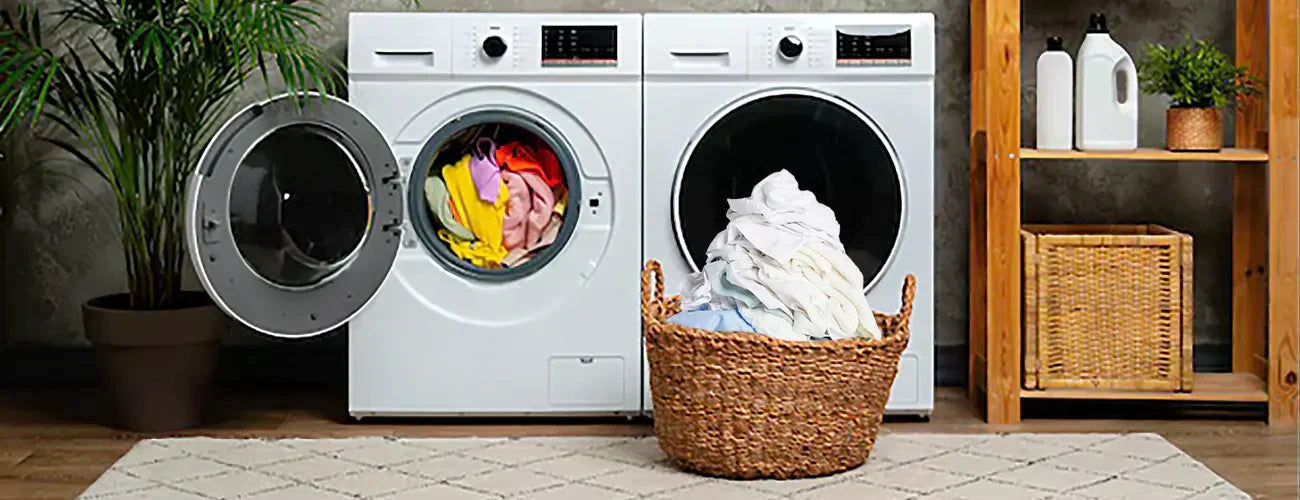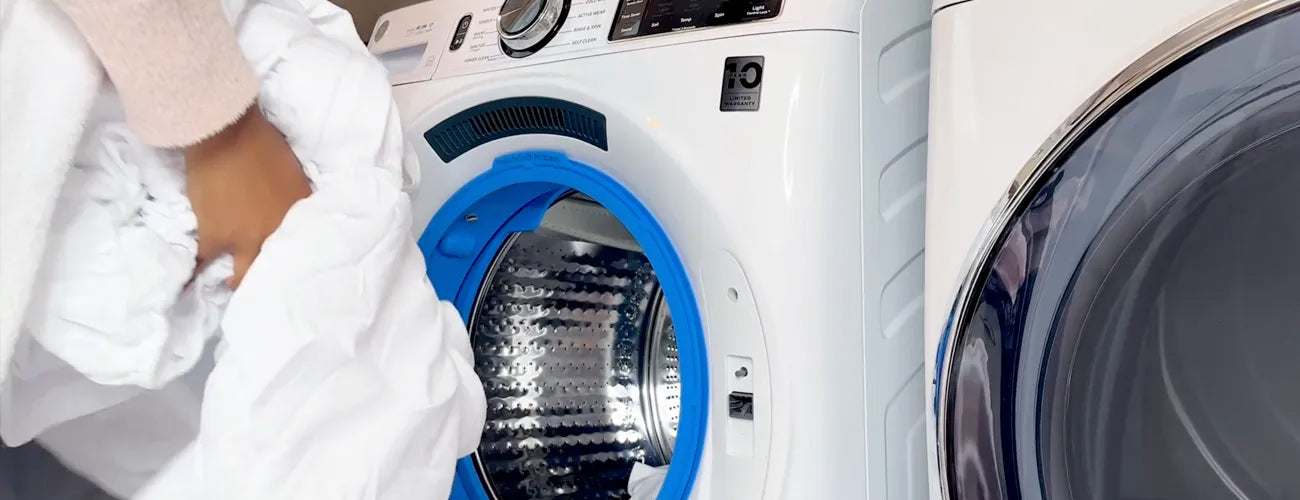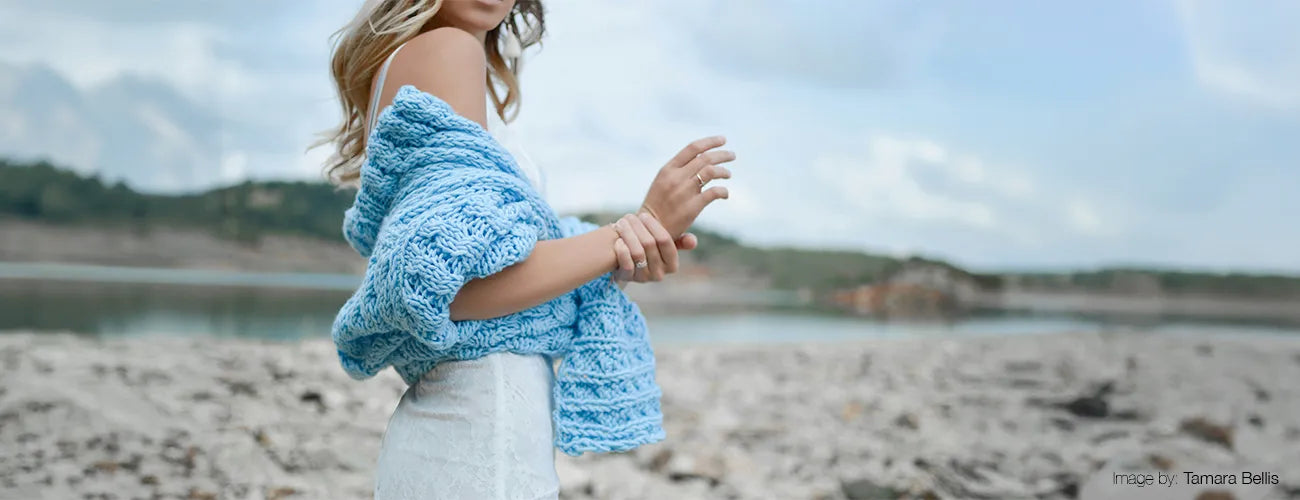How To Sort & Separate Clothes before you wash for perfect laundry
Laundry day can often feel overwhelming, but it doesn’t have to be. A few simple steps can ensure your clothes come out clean, undamaged, and vibrant, and it really is as simple as learning how to separate clothes properly before washing them.
At Sheet Yeah!, we know a thing or two about laundry. Our plant-based, eco-friendly laundry detergent sheets are designed to work gently on your clothes and the planet. But no matter what detergent you use, sorting your laundry properly is one of the easiest ways to get cleaner, brighter clothes while protecting your fabrics.
In this guide, we'll share expert laundry sorting tips that anyone can follow.
Why Proper Laundry Sorting Matters
Sorting laundry is more than just an organisational task. It plays a major role in preserving the quality and longevity of your clothes. By separating your laundry, you can:
-
Extend Clothing lifespan: Prevent shrinkage, fading, and fiber damage.
-
Enhance Washing machine efficiency: Lighter loads and correct cycles save energy.
-
Stain prevention: Avoid colour bleeding and discolouration.
-
Fabric protection: Keep delicates safe from rough fabrics.
Without proper sorting, fabrics can break down faster, dyes can transfer, and your clothes simply won’t last as long.
Prevent Fabric Damage
Mixing different fabrics and materials can cause damage over time. Rougher fabrics can wear down delicate materials, and heat-sensitive garments can shrink or become misshapen when washed with heavier clothes. Sorting clothes ensures that fabrics are washed at their optimal settings, reducing wear and tear.
Enhance Cleanliness and Longevity of Clothes
When you separate clothes by color, fabric, and type, each batch of laundry gets the attention it needs. This helps clothes maintain their vibrancy, softness, and overall appearance. Over time, the right washing techniques can extend the lifespan of your garments.
4 Key Laundry Sorting Categories
Knowing how to separate clothes for laundry begins with understanding the main categories to focus on. These categories ensure that each piece gets the correct treatment based on its needs.
1. Sort Laundry by Colours (Light vs. Dark)
Colour bleeding is one of the most common laundry disasters but it’s entirely preventable.
Dark clothes, like jeans and black shirts, tend to bleed colour when washed, while lighter clothes such as whites and pastels can pick up these colours and become stained or discoloured.
-
Whites: T-shirts, sheets, towels. Wash in warm or hot water (if safe for fabric).
-
Lights: Cream, pastels, light greys, pale shades. Wash in cold to warm water.
-
Darks: Dark items like jeans, black clothing, navy, deep hues. Always wash in cold to prevent/minimise fading and colour transfer.
-
Brights: Reds, purples, bright blues and vibrant colours. Wash separately when new ensures their intensity remains intact. Always wash in cold water.
2. Sort by Fabric Type
Different fabrics react to washing in various ways. Some fabrics require gentler handling, while others can tolerate a more robust wash cycle.
-
Cotton: Handles regular cycles, but may shrink if water’s too hot.
-
Synthetics (polyester, nylon, spandex): Prefer cold water and low-heat drying, always use a wash bag for any fabrics with strech in them to prevent them from losing shape.
-
Delicates (silk, lace, wool): Always use the delicate cycle and cold water. Only use detergents with no Enzymes as they break down the natural fibres in these fabrics and a wash bag / laundry bag for extra protection to avoid damage.
-
Activewear: Use a mild detergent (like our laundry sheets) and cold water to protect performance fabrics.
- Sturdy Fabrics: Jeans, towels, and bedding are made of stronger materials and can be washed on regular cycles.
3. Sort by Fabric Weight
The weight of your fabrics also plays a significant role in how they should be washed.
- Light Fabric Clothes: T-shirts, undergarments, and blouses can all be grouped together for a lighter wash. These fabrics generally dry faster and require less washing time.
- Heavy Fabric Clothes: Towels, blankets, and jeans are heavier and take more time to dry. Washing these items separately prevents them from slowing down the cleaning process and helps maintain the washer's efficiency.
4. Special Care Clothes
Certain clothing items require extra attention, like activewear, swimwear, or clothes with embellishments.
- Activewear: Clothes designed for sports or exercise often have special fabric technology that should not be subjected to high temperatures or harsh detergents.
- Swimwear: Always wash swimwear in cold water, as the heat from warm water can damage the elastic fibers, causing them to lose their shape.
- Embellished Clothes: Items with sequins, beads, or glitter should be washed separately to prevent damage or the loss of decorations, again always use a wash bag.
The Temperature Sorting Rule
Different fabrics require different water temperatures for the best results.
- Cold Water: Best for delicate fabrics and items prone to shrinkage, like wool or activewear.
- Warm Water: Good for everyday clothes, such as cotton, and to preserve colours.
- Hot Water: Ideal for whites, heavily soiled items, or towels and bedding that need to be sanitised.
Pre-Treating Laundry Stains
Before tossing stained items into the laundry, treat the stains. Use a stain remover or a natural solution, like vinegar or baking soda, to pre-treat the affected area. This increases the chances of successfully removing the stain during the wash.
-
Oil-based (makeup, salad dressing): Pretreat with dish soap before washing.
-
Protein-based (blood, sweat): Rinse cold, pretreat, wash cold.
-
Tannin-based (coffee, wine, tea): Use enzyme-based stain removers.
Always pretreat stains before washing to prevent setting them permanently.
Wash Cycles Explained
- Delicates Cycle - This cycle uses slower agitation to protect the fabric from wear.
- Regular Cycle - Standard for most loads like cotton clothes, towels or bedding
Air Drying vs. Machine Drying
Always air dry delicate garments to prevent shrinking or losing their shape. When necessary, use the lowest heat setting on the dryer to avoid heat damage.
Laundry Load Size Matters
Overloading your machine reduces cleaning efficiency. Always give your clothes space to move. Smaller, well-sorted loads wash and rinse more thoroughly, extending garment life.
Common Laundry Mistakes to Avoid
-
Mixing delicates with rough fabrics (towels, jeans).
-
Washing whites with darks.
-
Overusing detergent (which leaves residue).
-
Using fabric softener on towels (which reduces absorbency).
3 Easy Laundry Sorting Hacks
-
✅ Use divided hampers for lights, darks, and delicates.
-
✅ Keep mesh laundry bags handy for delicates.
-
✅ Write a quick-reference sorting guide and post near your washer.
Why Laundry Sorting Is Especially Important with Eco-Friendly Detergents
Eco laundry detergents like Sheet Yeah! work best when loads are sorted properly. Without harsh chemicals, your detergent relies more on water temperature, proper cycles, and sorting to get your clothes thoroughly clean — while staying gentle on skin, fabrics, and the environment.
Sorting Clothes for Different Machines
If you have different types of laundry machines (e.g., high-efficiency vs. regular washers), you may need to adjust your sorting practices. High-efficiency machines may require less detergent and smaller loads for optimal performance.
Tips and Tricks for Efficient Laundry Sorting
To make laundry day even easier, try using a few laundry hacks.
- Colour Catchers: These sheets catch any loose dye and prevent colours from bleeding onto other clothes.
- Laundry Bags: Use laundry bags for delicate fabrics or small items like socks to prevent loss and damage.
Conclusion
Sorting your laundry may feel like an extra step, but it’s the simplest way to care for your clothes — and your washing machine — long-term. With a little practice, you’ll see brighter colours, softer fabrics, and fewer laundry mishaps.
Remember: great laundry starts with smart sorting.
FAQs
1. How do I stop my dark clothes from fading in the wash?
Sort dark and light clothes into separate loads, always wash in cold water, inside out, and avoiding excessive drying can help preserve the colour of your clothes.
2. Can I wash all my clothes together?
No, mixing fabrics, colours, and materials can cause damage. It’s essential to sort clothes based on colour, fabric type, and washing instructions. Never wash towels with clothes.
3. What’s the safest detergent for sensitive skin?
Look for fragrance-free, non-toxic options like Sheet Yeah’s laundry detergent sheets, which are perfect for babies, allergy sufferers, and anyone with sensitive skin.
4. Is hot water always better for stains?
Not always. Some stains set with heat. Always check the stain type first.
5. What’s the best way to wash delicate items?
Delicates should be washed on a gentle cycle in cold water, ideally in a laundry bag to avoid snags or tears.
6. Can I use hot water for all clothes?
Hot water is best for whites and heavily soiled items, but it can shrink or damage delicate fabrics, so it’s best to use cold or warm water for those.
7. Is it necessary to pre-treat stains?
Yes, pre-treating stains ensures better results and helps to break down the stain before it sets in the wash.
6. How often should I clean my washing machine?
Monthly cleans keep your machine fresh and performing at its best, especially the drum and detergent dispenser, to maintain efficiency and prevent odours.
Written by Sheet Yeah Laundry Experts, trusted by thousands of families for eco-friendly laundry solutions.





